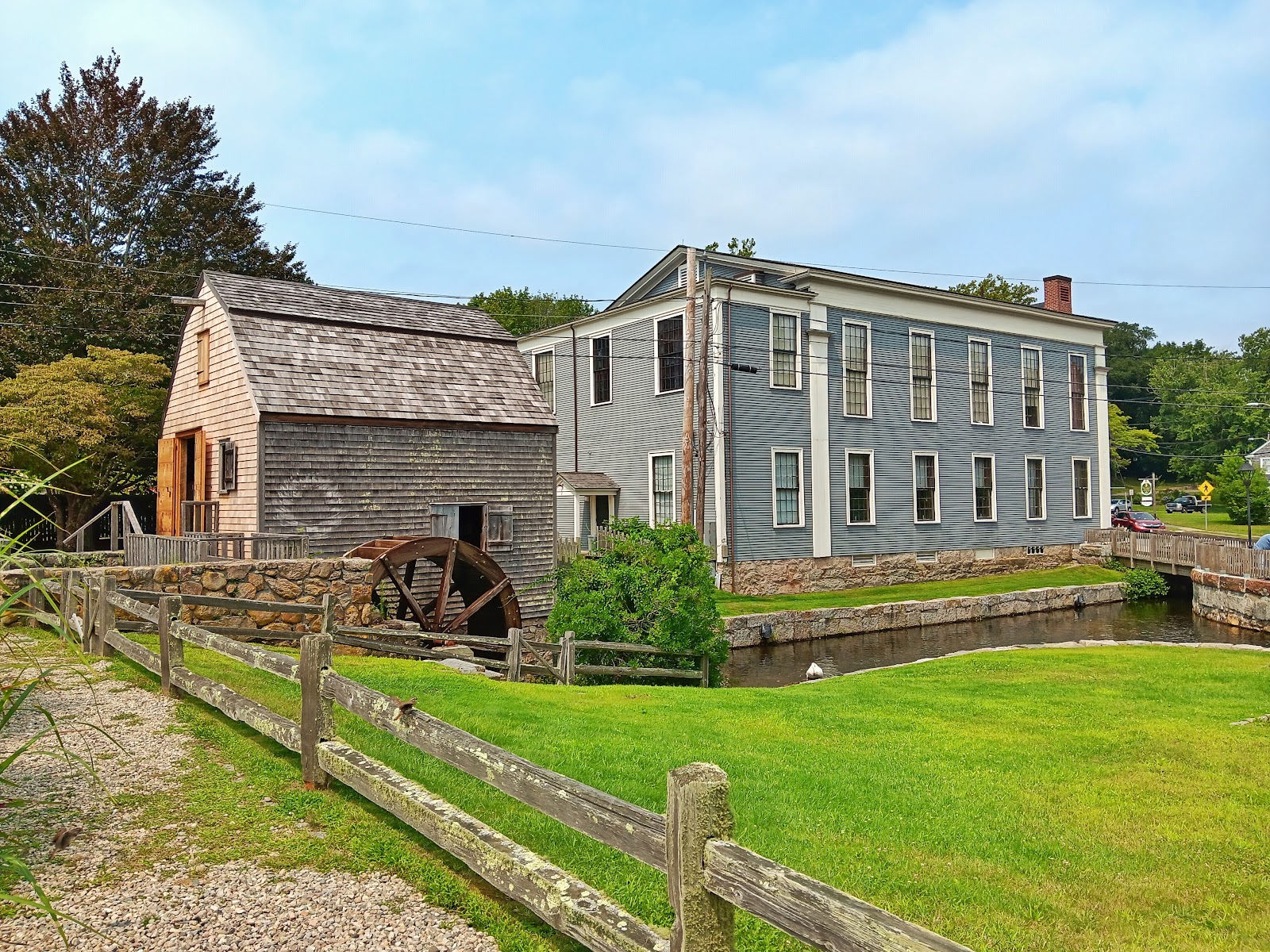Dexter Grist Mill

In August 2024, I went on a five-day trip to Cape Cod, MA where I visited many museums and cultural organizations, along with quick history stops and trails. On the third day of my trip, I visited Dexter Grist Mill in Sandwich, MA, located across the street from the Sandwich Glass Museum and next door to the Town Hall. This building is owned and maintained by the town just like Hoxie House, so the tour was of similarly high quality.



This reconstructed grist mill was instrumental in the center of Sandwich being listed on the National Register of Historic Places in 1975 as “Town Hall Square Historic District”. The mill is named for Thomas Dexter, an early English colonist who arrived in the area around 1640 to built the original water-powered mill where the water from Shawme Lake splashed into aptly named Mill Creek. Local farmers brought their grain to be crushed into meal or flour. The mill saw updates during the American Industrial Revolution in the late 18th through late 19th century. In 1856, the classic undershot wooden water wheel was upgraded to a more efficient iron turbine. Like most New England towns, Sandwich saw a drastic fall in mill work during the early 20th century. The mill building became a paper mill and then a tea room before it was shut down. The building became an eyesore, legendarily offending the church ladies who could see it from nearby First Church. The town fixed up the mill to an early 19th century form during the 1960s and even imported a French grinding wheel. Cornmeal ground on site can be purchased at the ticket booth.






Grinding the grain is a complex process. Kernels of dried corn — called maize outside of the North America — were poured into a hopper positioned above a pair of grindstones. When the miller released the water wheel, the stones began grinding. The shoe, a gently vibrated wooden trough, dribbled the corn into a hole in the upper stone, also known as the runner stone. Millers often hired boys to “keep their noses to the grindstone” or periodically smell the stones to make sure the friction had not caught the grain on fire. Because the air was filled with corn dust, explosions were a genuine concern. Ground corn dropped into a chute and gradually slid into a box or sack for storage. Millers made their living by keep part of the flour that they ground, with some being more scrupulous than others. Sometimes, the mill would close to sharpen the grinding stones.






During its regular season in the spring, summer and early fall, Dexter Grist Mill is open seven days a week, from 11:00 a.m. to 4:30 p.m. on Monday through Saturday, and from 1:00 p.m. to 4:00 p.m. on Sunday. Tickets are $5 for teenagers and adults, $4 for active military, $3 for children 9 to 12, and $0 for children 8 and under. Like most historic buildings, the mill is not accessible for those using a wheelchair, and the narrow steps may be difficult to navigate for those with limited mobility, but a truncated video tour is available online. The level of energy on this tour greatly depends on your tour guide. My group was paired with an enthusiastic young guide, while the group before us received a calm older guide; the energy levels happened to match those in both groups. This is stop is worth the visit for anyone interested in industrial history and architecture and would be a fun tour for anyone wanting to learn more about colonial life on Cape Cod.
Abby Epplett’s Rating System
Experience: 9/10
Accessibility: 5/10